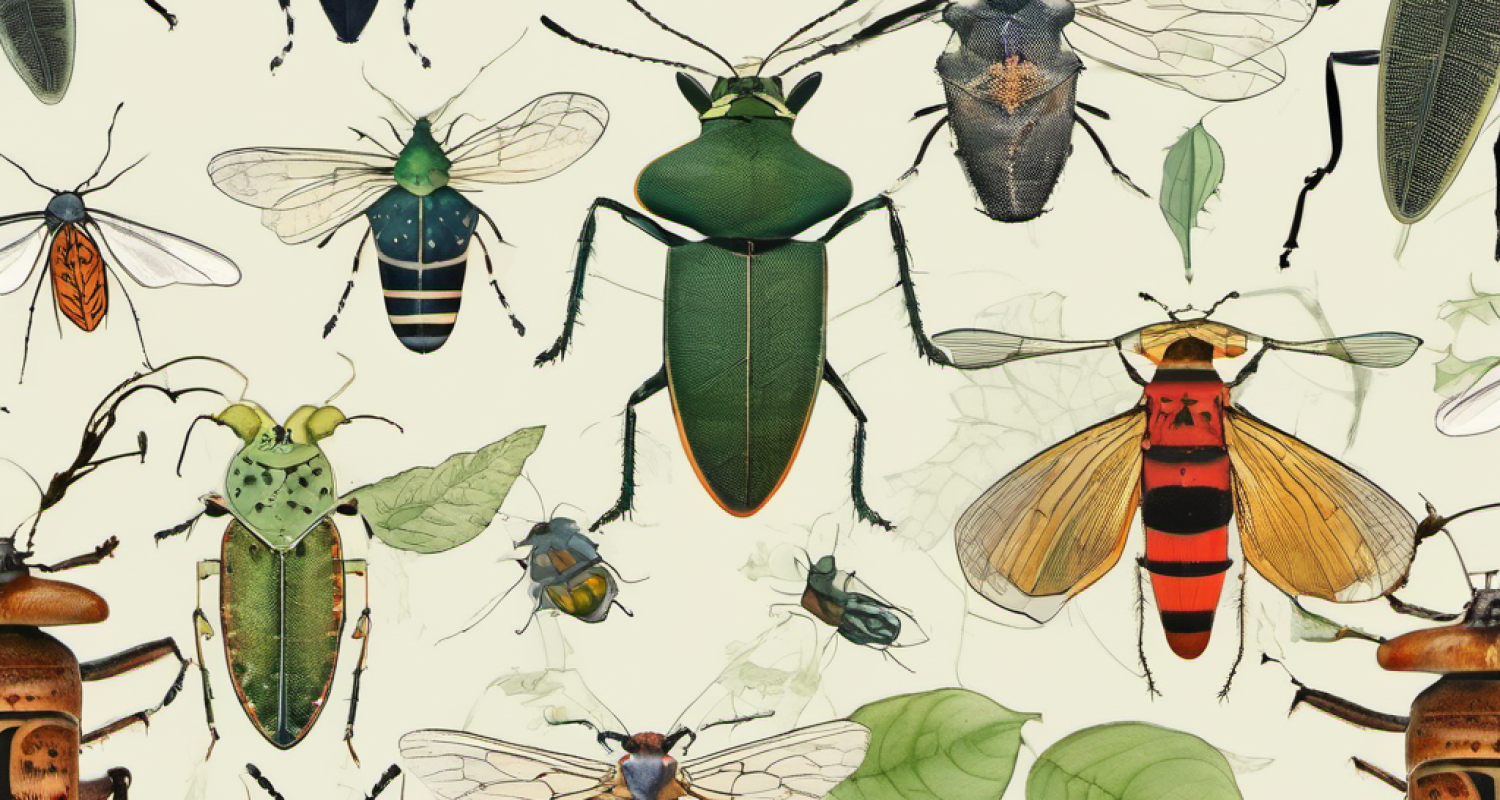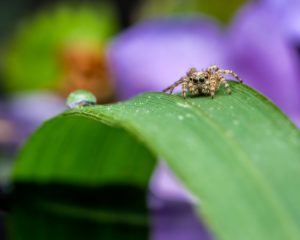A Bug's Life: The Heroes and Villains of Gardening

“Bugs are not going to inherit the earth. They own it now. So we might as well make peace with the landlord.”
-Thomas Eisner
Introduction
In the realm of gardening, the soil is the canvas and the seed plays the storyteller, but have you ever peeked into your garden and wondered, “These bugs are ruining this work of art?” Well, hold your horses, because in the diverse world of gardening, these bugs might just be enhancing your plant’s life. But amidst these good bugs live a few mischievous bugs as well trying to play a disruptive role. Let’s dive into the world of Indian gardening and observe the 10 most commonly seen good and bad bugs in your gardens, where these tiny creatures wield some serious influence.
Good Bugs
1. Ladybugs – The Polka-Dotted Protectors

The ladybird beetle, more commonly known as the ladybug, is your garden’s defence, feasting on aphids and keeping your plants safe. In fact, over their lifetime a ladybug feasts on up to 5,000 aphids over their lifetime. As natural predators of insects, they also reduce your need for insecticides which is extremely helpful in indoor environments.
2. Praying Mantis – The Poised Predator

The praying mantis, contrary to its villainous role in the movie ‘Goosebumps’, plays a positive part in your garden. They feed on various harmful insects including flies and moths which can be a pestilence to plants. It acts as a natural pest control reducing the requirement of pesticides which helps in supporting the health of your plant and its ecosystem.
3. Predatory Nematode – The Stealthy Guardian
Predatory nematodes, often unseen yet incredibly impactful, serve as silent protectors of your garden’s vital root system. They actively hunt and feed on other soil-dwelling pests including larvae of beetles, helping to maintain a healthy balance beneath the soil’s surface. They naturally regulate populations, reducing the need for chemical interventions and further helps promote a balanced ecosystem for flourishing plants.
4. Spider Mite Predator – The Web-Weaving Defender

The spider mite predator, as the name suggests, preys upon its namesake – the spider mite, a notorious pest for plants. They consume spider mites at an exponential rate, curbing their population and preventing any further damage within the garden. Acting as a natural pest control, they provide a safer environment for your plants to grow.
5. Whitefly Parasite – The Silent Sentinel

An often inconspicuous yet highly effective bug, the whitefly parasite acts as a vigilant guardian against whitefly infestations. These minute parasitic wasps lay eggs inside a whitefly’s nymph, the form of the whitefly before adulthood, leading to a reduced whitefly population within your garden. Similar to many other bugs, they help in maintaining a stable ecosystem.
6. Whitefly Predator – The Backup Avenger
Similar in function to the whitefly parasite, the whitefly predator helps reduce the whitefly population in your garden. This protects from your garden being overwhelmed by a large whitefly population. These bugs, unlike the whitefly parasite, feast upon the whitefly at the adult form, almost acting like a second wall of defence against whiteflies.
7. Thrip Predator Mite – The Tiny Troubleshooter
As the name implies, the thrip predator mite specialises in hunting down and consuming troublesome thrips, another group of plant pests. These minute predators feed on thrips larvae as well as other mites including the two-spotted spider mite. By employing these natural allies, you can maintain a pest-resistant garden and help foster a thriving environment for your plants.
8. Pirate Bug – The Valiant Vigilante
The pirate bug plays a crucial role in safeguarding your garden’s ecosystem similar to some of the bugs mentioned earlier. By feeding on a diverse variety of pests from thrips and mites to aphids, these bugs act as natural pest controllers, reducing the requirement for pesticide use within your garden. Their predatory behaviour has a positive impact on your plant’s habitat.
9. Green Lacewings – The Delicate Hunter

Lacy wings and a voracious appetite for pests make the green lacewings the unsung heroes of the garden. These elegant creatures prey on aphids, caterpillars and other small pests. Their larvae, also known as “aphid lions”, are voracious hunters that feed on a wide range of garden pests. Similar to other good bugs, they help reduce the need for chemical pesticides and foster healthier plant growth.
10. Honey Bees – The Pollination Powerhouses

Honey bees, the diligent workers of the floral world, play a pivotal role in your gardens. As prolific pollinators, they tirelessly collect nectar and pollen from flowers which play an essential role in plant reproduction. They further promote diversity and abundance within your garden.
Bad Bugs
1. Aphids – The Plant Juice Enthusiasts:
Aphids, including commonly known greenfly and blackfly, are some of the bugs that cause the most havoc to the plants of our garden. They damage the host plant by sucking juices from leaves and stems leading to discoloration, leaf curling, yellowing, and stunted growth. Furthermore, they reproduce at an exponential rate, even up to 12 times per day, making it vital to get them under control.
2. Fungus Gnat – The Winged Villains
Fungus Gnats, also known as Sciarid Flies, are bugs we frequently encounter in our gardens that are harmful especially when they are high in larval number. They may cause damage to the roots by either feeding on root hairs or tunnelling into the root itself.
3. Spider Mites – The Invisible Menace
Spider mites, though barely visible to the naked eye, wreak havoc on plants by wreaking havoc on plants by puncturing cells and sucking out their contents. This leads to various issues for the plant including stippling, yellowing and eventually leaf drop. These tiny pests thrive in warm and dry conditions and reproduce rapidly and can infest plants within a matter of just a few days. Their webbing often coats leaves which acts a signal of their presence and need for immediate action to prevent its spread and damage.
4. Thrips – The Silent Leaf Eaters
Thrips are minute yet destructive creatures that pose a threat to plants by rasping and sucking the contents of leaves, causing silvery speckling or bronzing, as well as distorted growth and leaf drop. These pests reproduce quickly, making early detection and intervention crucial to preventing an exploding population that could cause significant damage to your garden.
5. Whiteflies – The Winged Invaders
Creatures resembling tiny moths, the whitefly can cause substantial harm by feeding on plant sap. This leads to weakened plants, yellowing leaves and reduced vigour which refers to a plant’s growth rate. The whitefly’s ability to multiply rapidly and spread makes them a persistent nuisance within the garden, requiring vigilant management to prevent widespread plant damage and infestation.
6. Mealybugs – The Cottony Raider
These cotton-shape creatures pose a large threat to the plant population, feeding on plant sap which leads to yellowing, wilting and distorted growth. They often hide beneath foliage or in leaf nodes making them quite challenging to eradicate. Furthermore, their ability to reproduce swiftly necessitates prompt action to prevent large numbers causing severe damage within your garden.
7. Caterpillars – The Voracious Devourers
Caterpillars are the larval stage, or the stage before adulthood, of butterflies and moths. They voraciously consume foliage leading to holes within leaves and defoliation. Their feeding behaviour also weakens plants and hinders growth. Similar to the other bad bugs, it is vital to manage their population to maintain the health of your garden.
8. Leaf Miners – The Subtle Underminers
These small and inconspicuous creatures leave distinct trails or tunnels within leaves as their larvae feed, causing damage to the plant that reduces the plant’s ability to photosynthesize effectively. Their presence also compromises the aesthetics of the plant and in severe cases may even weaken them. As is the case for all bad bugs, vigilant monitoring and management is crucial to prevent further damages within your garden.
9. Fruit Flies – The Spoilage Sowers
These bugs are notorious for their swift reproduction and their knack for infesting ripe fruits pose a significant threat to fruits produced in Indian gardens. They lay eggs in fruits leading to rapid spoilage making these fruits unsuitable for consumption. Their presence leads to the requirement of stringent measures to curb possible damage on the fruits in your garden.
10. Cutworms – The Stealthy Saboteurs
Cutworms are the stealthy yet destructive larvae of certain moth species that pose a threat to the young plants in your garden. These pests sever young seedlings at the base of the stem causing irreparable damage to these crops. Their nocturnal habits make early detection quite challenging, often leaving gardeners to find their garden ruined overnight. Effective management techniques are crucial to protect young plants from these relentless pests.
Conclusion
Identifying helpful and harmful bugs hinges on understanding their behaviour and impacts. Observing signs of devastation such as yellowing, wilting and distorted growth are a few of the indicators of the presence of bad bugs within your garden. On the other hand, undamaged foliage and balanced plant growth signal the existence of our garden’s heroes. As you get back to your gardens, let’s not forget about the pivotal role these bugs play in a plant’s life. So, the next time you spot a ladybug or an aphid(you have to look really close as they may be invisible to the naked eye), remember, they might just be the heroes or villains in your own gardening saga.




